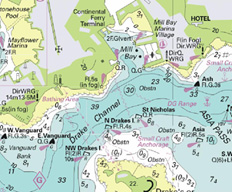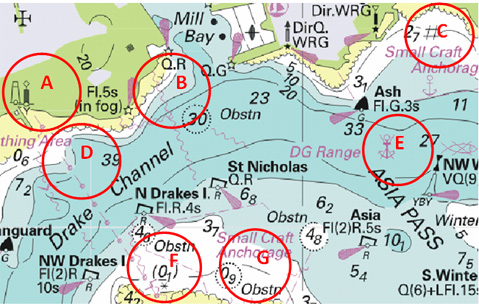
The X Factor
X marks the spot.
It’s the examiner's finger pointing at a cross on the chart that can strike fear in a RYA Yachtmaster™ candidate. The finger is often closely accompanied by the words, ‘Produce a passage plan to get to this point and confirm your position when you are there’.
The parameters of the exercise are then set; the candidate may be able to use bearings and contours, possibly a GPS lat and long, maybe radar; occasionally all three and sometimes just one method.
Whilst marking a spot on the chart may seem a mean thing to do, it is a good way to test exacting navigational and pilotage skills, similar to anchoring in a small bay or piloting to miss rocks.
Experienced skippers keep it simple; often using just two position lines to get to the point. They run along one line, maybe using a back bearing from a known point or depth contour, until they cross the other bearing or contour line.
Sometimes it’s best to just put into practice what you preach, and some examiners will head out on the water and ask the candidate to select a safe place to anchor, and produce a passage plan to this point.
With lots of other things to think about while out the water, it is easy for the obvious to be overlooked and an entirely unsuitable anchorage to be selected. We’ve all done it, on occasion, I know I have. Too many distractions and you miss what’s staring you in the face. Some examples I have come across include:
- Attempting to anchor over a cable
- Anchoring on top of a marked wreck
- Having insufficient anchor chain for the depth
- Anchoring in an exposed bay
The golden rules of anchoring
1) Look for shelter from wind, tide and swell.
2) Look at the chart. Known problems are often displayed.
3) Drop enough scope but be aware of your swinging circle and where this will take you.
4) Get a transit and regularly check your position, especially at the turn of the tide or wind change.

Symbols to watch out for when anchoring:
A) Posts ashore with yellow top marks, often indicate the entry point for a cable or pipeline.
B) Curly lines indicate a cable.
C) A hash mark indicates foul ground.
D) Lollipops indicate a pipeline.
E) No anchoring signs.
F) Watch out for isolated rocks and those that are awash especially as you swing.
G) Obstructions. The depth is often stated, but there is something down there to snag the anchor.
There are, of course, many other symbols, but look at the chart where you expect to anchor and if there is a symbol that you are unaware of, look it up, or move to a safer place.
Simon Jinks, RYA Yachtmaster™ Instructor and Journalist
Contact UsArticle Published: August 02, 2011 13:42
Article Updated: August 01, 2012 11:34